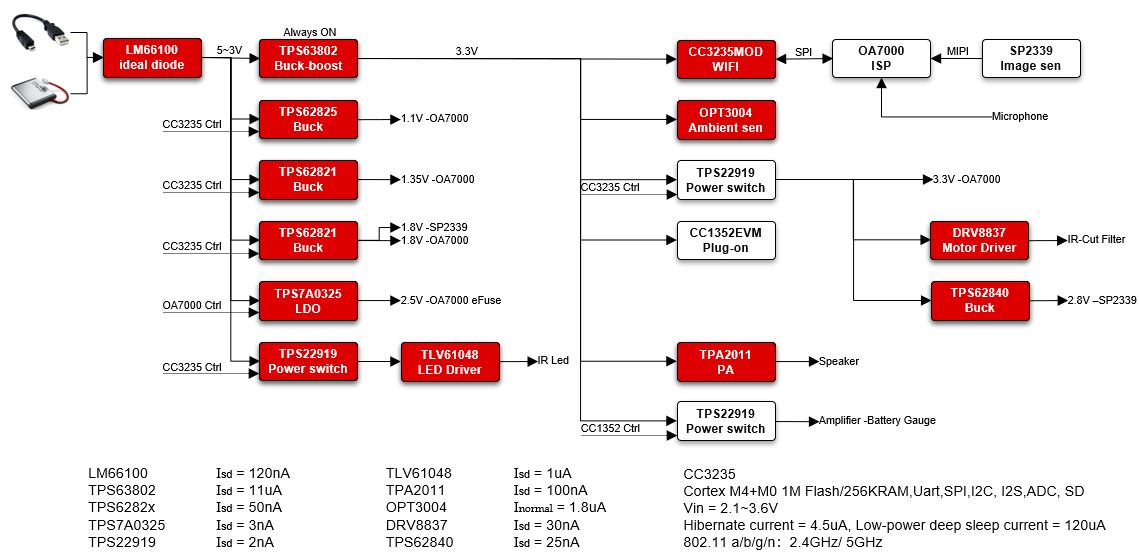-
TIDA-010224Additional Information for Low-Power Consumption Design
TIDA-010224Additional Information for Low-Power Consumption Design
Abstract
TIDA-010224 is designed as a reference for low-power Wi-Fi® cameras capable of operating from battery supplies. In order to extend battery lifetime as much as possible, most sockets are chosen to have a shutdown current in the nA range (as shown in Figure 1-1) and the TPS63802 high-efficiency buck-boost is used. In order to better understand more easily evaluate TIDA-010224, this application note describes a few additional use cases, how to set up the compiler environment if code changes are needed, how to update the firmware of CC3235 and OA7000, and how to test these use cases.
 Figure 1-1 TIDA-010224 Hardware
Design Structure
Figure 1-1 TIDA-010224 Hardware
Design StructureTrademarks
Code Composer Studio™ and Simplelink™ are trademarks of Texas Instruments.
FreeRTOS™ is a trademark of Real Time Engineers Ltd.
Wi-Fi® is a registered trademark of Wi-Fi Alliance.
All trademarks are the property of their respective owners.
1 Introduction
Below are additional test cases demonstrating the design's low power consumption. In some cases build of material (BOM) and firmware changes are required.
Adding test cases:
- Testing current in hibernate mode
- Testing current in LPDS mode
- Testing average current under Intermittently connecting mode (sending 100 data to server)
- Testing average current under always connecting mode (sending 100 data to server)
- Test key step time when startup (via universal asynchronous receiver/transmitter (UART) printing or signal of connector)
- Evaluate performance of video and audio
Test case Features:
- The system can be put in wakeup from both Hibernate and LPDS mode via general-purpose input/output (GPIO) or real-time clock (RTC).
- The current in hibernate mode is around 20 µA/5 V.
- The current in LPDS mode is around 120 µA/5 V.
- Startup time from hibernate to full running is less than 500 ms.
- Configurable interval time in intermittently connecting mode or always connecting mode
- Configurable stream transferring of only video, video and audio, video and ring